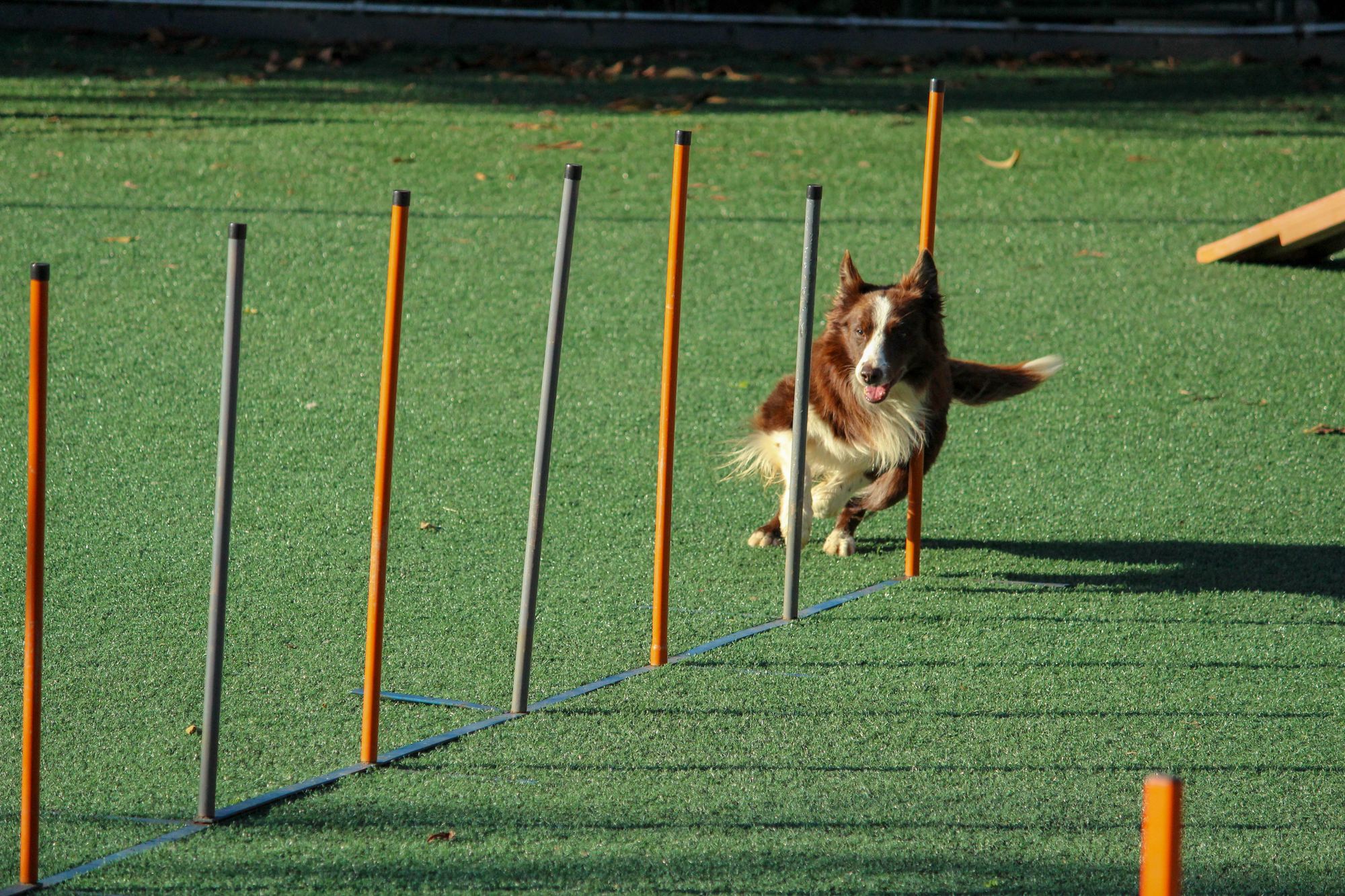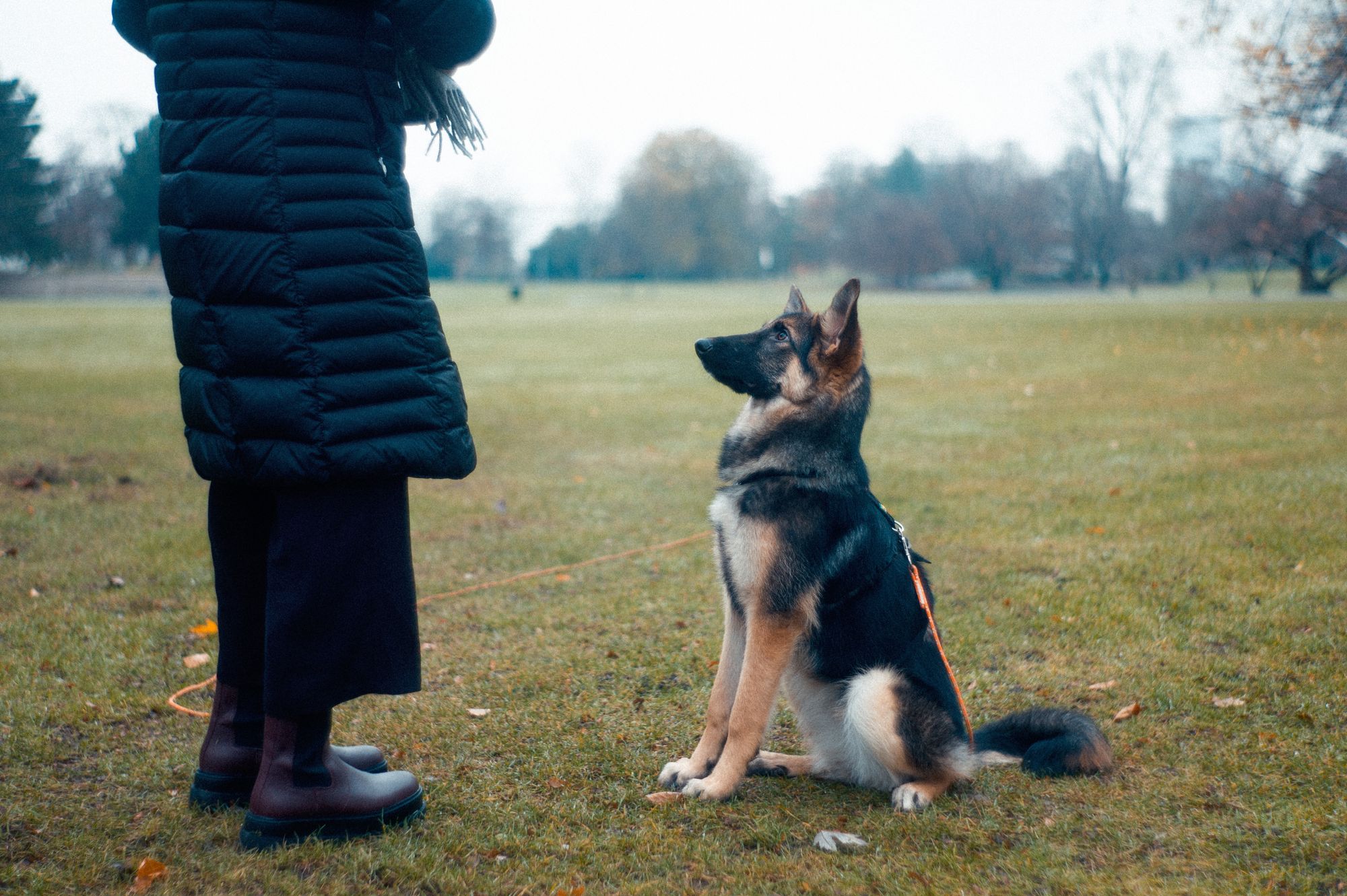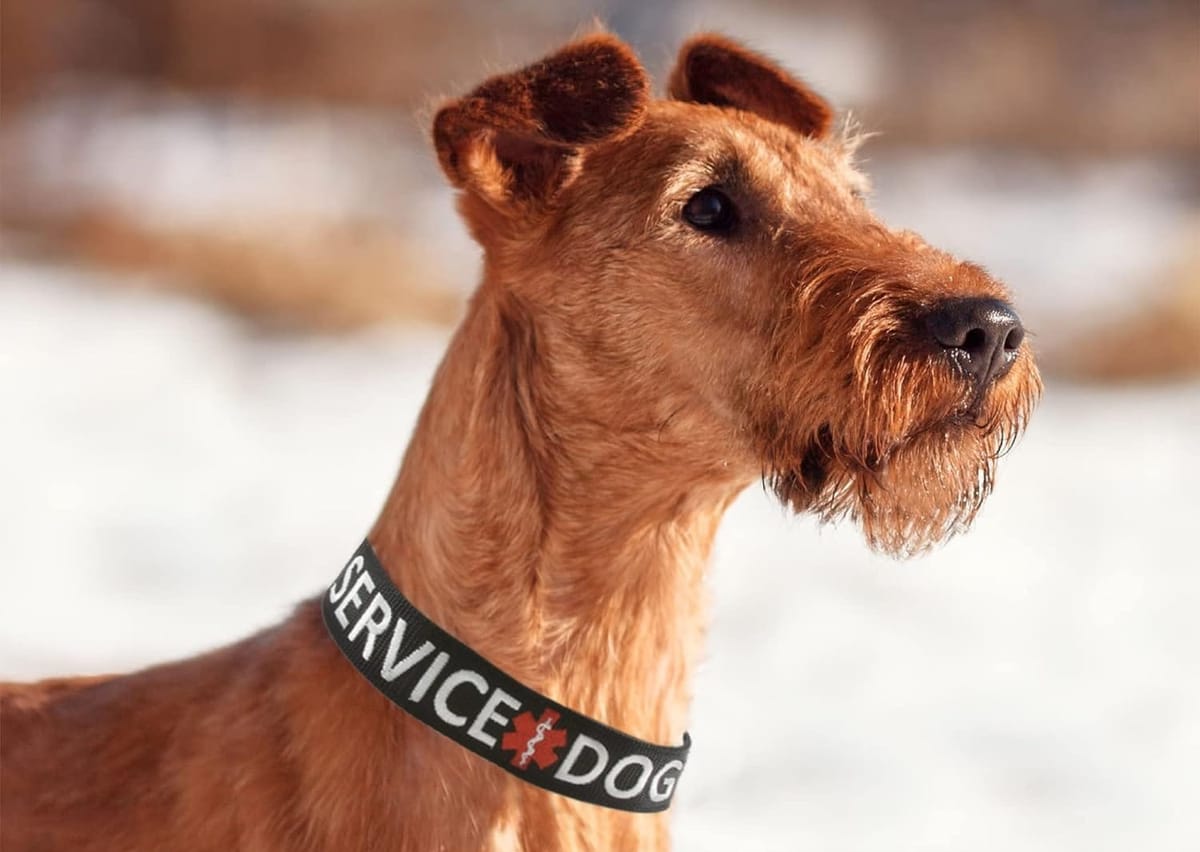
Dogs are not just man's best friend. They can be life-saving companions, guides, and helpers, especially when trained to become service dogs. Today, we're embarking on a journey to learn about service dog training.
Understanding Service Dogs
Before we dive into the training process, it's important to understand what service dogs are and what they do. These are not just ordinary pets; they are specially trained to perform tasks for a person who is disabled. This could be a physical disability, such as visual impairment, or a mental health condition like PTSD.
Types of Service Dogs
The world of service dogs is vast and diverse. There are guide dogs for the visually impaired, hearing dogs for the deaf, mobility assistance dogs, diabetic alert dogs, seizure response dogs, and psychiatric service dogs, to name just a few. Each type requires specific service dog training based on the tasks they will perform and the needs of the person they will assist.
The Importance of Proper Training
Service dogs can be life-changing for those who need them. However, this transformation doesn't happen overnight. It takes time, patience, and, most importantly, proper training. But how does one embark on this journey?
Step-by-Step Guide to Service Dog Training
The first step in training a service dog involves choosing the right dog. Not all dogs are suited to this type of work. Consider the breed, age, temperament, and health of the dog. Consulting with a professional service dog trainer or an organization specializing in service dogs can be extremely beneficial at this stage.
The next step is basic obedience training. Before a dog can learn specific tasks, it must first master basic commands like sit, stay, come, down, and leave it. Remember, a well-behaved dog is easier to train and is less likely to be a distraction or a nuisance in public settings.
Once basic obedience is solid, you can start task-specific training. This depends on the type of service dog you are training. For example, a guide dog would need to learn how to guide a person around obstacles, while a diabetic alert dog would need to learn how to detect changes in blood sugar levels.
Training a dog to become a service dog is a long and intensive process. It takes patience, consistency, and a lot of positive reinforcement. But the rewards - a loyal, hard-working service dog and a more independent life for the person they assist - make it all worthwhile.

The Benefits of Service Dogs
The benefits of having a service dog go far beyond the practical tasks they perform. They also provide emotional support, companionship, and independence, improving the quality of life for many individuals with disabilities.
The Certification Process
In the United States, there's no legal requirement for service dog certification. However, it's a good idea to have your service dog certified to avoid any potential disputes or issues when accessing public spaces. Certification also serves as proof that the dog has been properly trained and can behave appropriately in public settings.
Training Techniques for Service Dogs
When starting your journey of training techniques for service dogs, you should understand the importance of positive reinforcement. This method involves rewarding the dog when it performs a task correctly. Rewards could be treats, toys, praise, or anything that the dog finds motivating.
This not only helps the dog learn faster but also builds a positive association with the task, encouraging the dog to perform it willingly and enthusiastically.
Common Service Dog Commands
The service dog's task could vary, but there are certain service dog commands every service dog should know, like "sit", "stay", "come", "down", "heel", and "leave it". These commands form the foundation of any service dog's training and should be mastered before moving on to more specific tasks.
The Challenges of Service Dog Training
While the rewards of service dog training are immense, it's essential to acknowledge the challenges. Patience and consistency are key, and setbacks should be expected. But remember, every challenge you overcome brings you one step closer to having a well-trained service dog.
Continuing Education for Service Dogs
Once a service dog has been trained and is working, that doesn't mean the learning process is over. Regular training sessions are necessary to keep their skills sharp. This is particularly true for service dogs who perform tasks that are not used daily.
The Value of Professional Service Dog Trainers
While it's possible to train a service dog on your own, there's significant value in working with professional service dog trainers. They have the experience, knowledge, and skills to guide you through the process and help troubleshoot any problems that may arise.
Keeping Up with Service Dog Behavior
As you progress through the journey of service dog training, understanding and monitoring service dog behavior becomes critical. It's not just about following commands but about how your dog behaves in various situations. A well-trained service dog should be calm, confident, and attentive in all environments, regardless of distractions.
Service Dog Training Tips
Training a service dog is a marathon, not a sprint. So here are some essential dog training tips to make your journey a little smoother:
- Be consistent: Use the same commands and rewards so your dog understands what is expected.
- Keep sessions short: Training can be mentally exhausting for a dog. Short, frequent training sessions are more effective than long ones.
- Be patient: Dogs learn at different rates. Don't rush the process.
- Make it fun: Training should be a positive experience for both of you. Keep it upbeat and end on a high note.
Training Dogs for Disabilities
As we've discussed, there are different types of service dogs, each providing assistance to individuals with varying needs. When training dogs for disabilities, it's important to tailor the training to the specific tasks the dog will perform. This could involve retrieving objects for a person with mobility issues or providing deep pressure therapy for someone with anxiety.
Making a Difference with Service Dogs
Training a service dog can be challenging, but remember, every command learned, every task mastered, makes a difference. Service dogs offer a level of independence and confidence to people with disabilities that might not otherwise be possible.

Consistency is Key
In the process of service dog training, consistency is vital. Dogs learn best through repetition and reinforcement. So be consistent in your commands, your rewards, and your expectations. This creates a clear communication channel between you and your dog, making the training process smoother and more effective.
Selecting Service Dog Breeds
While it's true that many breeds can be trained as service dogs, certain breeds excel due to their temperament, intelligence, and size. When choosing a dog for service work, consider breeds like Labrador Retrievers, Golden Retrievers, and German Shepherds. But remember, the individual dog's temperament and health are as important as its breed.
The Role of a Handler
As a service dog handler, your role extends beyond training. You are your dog's guide, protector, and companion. You're responsible for your dog's welfare, ensuring it's physically and mentally fit for service work.
What's Next After Service Dog Training
After your dog has mastered the skills needed for service work, it's time to practice. Practicing these skills in different environments ensures your dog can perform under various circumstances. It's also important to continue learning and training throughout your dog's service career to maintain their skills and adapt to any changes in the handler's needs.
Celebrating Successes
One of the most enjoyable aspects of service dog training is celebrating the successes, both big and small. Did your dog master a new command? Celebrate! Did they navigate a challenging obstacle course? Celebrate! Remember, each victory is a step closer to your dog becoming a fully trained service dog.
Lifelong Learning and Adaptation
As handlers, we should embrace the idea of lifelong learning. Dogs, like people, can continue learning throughout their lives. In addition to maintaining existing skills, consider teaching your dog new skills as they become necessary. The world changes, and the needs of a person with a disability might also change. Being open to adaptation and learning new things will ensure your service dog can continue to provide invaluable support.
Common Misconceptions About Service Dogs
It's essential to address some common misconceptions about service dogs. They aren't restricted to any particular breed. Yes, some breeds are commonly used due to their temperaments and size, but ultimately, the dog's individual characteristics and suitability for the tasks required are the most important factors.
Another misconception is that service dogs never get to "be dogs". Rest assured, service dogs have downtime where they get to play, relax, and just be dogs.
Beyond Training: The Impact of Service Dogs
Service dogs do more than just perform tasks. They provide emotional support, boost confidence, and can greatly improve their handler's quality of life. From helping individuals with physical disabilities gain independence to providing vital support for people with mental health conditions, service dogs truly make a world of difference.
Creating Bonds Beyond Training
Training a service dog isn't just about learning commands and tasks. It's about building a bond of understanding, trust, and mutual respect between the dog and the handler. This bond isn't built overnight; it's formed over time, strengthened with each training session, each shared experience, and each moment spent together.
The Beauty of Teamwork
When you see a service dog in action, it's more than just a well-trained dog performing tasks. It's a team. The dog and handler work together, each understanding their role and trusting each other implicitly. This teamwork doesn't happen by chance; it's built through hours of training, patience, and a deep understanding of each other.
The Power of a Well-Trained Service Dog
A well-trained service dog can open up a world of possibilities for a person with disabilities. They can provide a level of independence that may not otherwise be possible. They can help their handler navigate the world, provide emotional support, and even save lives.
The Journey Never Ends
Even after your dog has been trained and is working as a service dog, remember that the journey isn't over. There will always be new things to learn, new challenges to overcome, and new experiences to share. The world of service dog training is one of constant growth and learning - for both the dog and the handler.

Conclusion
Service dog training is a profound and transformative journey that goes beyond teaching dogs to perform tasks. It's about nurturing a bond built on trust, understanding, and mutual respect between the dog and the handler. This relationship, fostered over time, forms the cornerstone of the teamwork required for a service dog and its handler to work harmoniously.
The training journey begins with basic obedience training, followed by task-specific training catered to the handler's unique needs, whether it's assistance with physical tasks or providing emotional support. Essential training aspects include consistency in commands and rewards, and understanding that this is a marathon, not a sprint, requiring patience, perseverance, and positivity.
While certain breeds like Labrador Retrievers, Golden Retrievers, and German Shepherds are often chosen due to their temperament and size, it's vital to remember that service dogs aren't restricted to specific breeds. The individual dog's characteristics, suitability for the tasks required, and health are the primary factors in determining its potential as a service dog.
Training doesn't end when a service dog begins its role. Lifelong learning and adaptation should be embraced, with regular training sessions necessary to maintain sharp skills and adapt to any changes in the handler's needs. This continuous education ensures that the service dog can provide invaluable support throughout its service life.
Addressing common misconceptions about service dogs is crucial. They come from various breeds, and while their duties are essential, they also have downtime, where they get to play, relax, and just be dogs. More than just task performers, service dogs provide emotional support, boost confidence, and enhance the quality of life of individuals with disabilities.
In summary, the journey into the world of service dog training might be challenging and requires a significant investment of time and energy. Still, the outcome is beyond rewarding. As a handler or trainer, you are not merely teaching a dog; you are creating a companion that can dramatically change someone's life. So, as you embark on this noble journey, remember that every step taken, every command learned, and every task mastered brings us closer to a world where everyone who needs a service dog can have one.
Here's to the remarkable world of service dog training, and to you, a life-changer making a difference in this world, one service dog at a time.
Want to learn more about service dogs?












